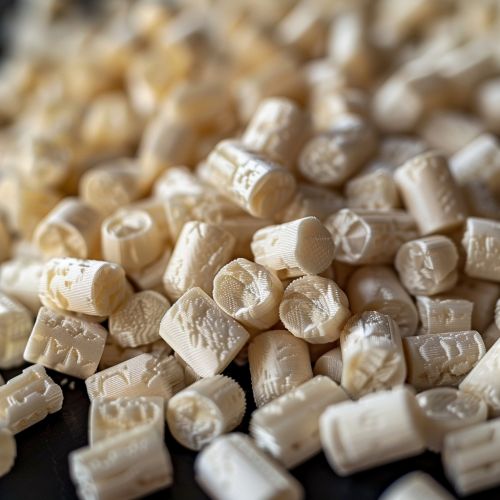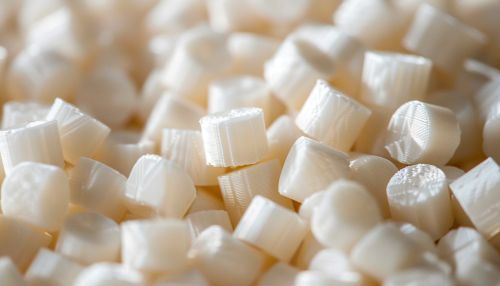Polylactic Acid
Introduction
Polylactic Acid (PLA) is a type of polymer that is derived from renewable resources like corn starch or sugar cane. It is a bioplastic that is biodegradable and has characteristics similar to polypropylene (PP), polyethylene (PE), or polystyrene (PS).


Production
The production of PLA starts with the fermentation of plant-derived sugars to produce lactic acid. The lactic acid is then polymerized either by a process of condensation or the use of a metal catalyst. The resulting polymer can be processed in a manner similar to other thermoplastics into a variety of forms.
Fermentation
The initial step in the production of PLA is the fermentation of plant-derived sugars. The sugars, typically derived from corn starch or sugar cane, are converted into lactic acid by bacteria. This process is similar to the fermentation process used in the production of many foods and beverages.
Polymerization
Once the lactic acid is produced, it is converted into a polymer. This is done either by a process of condensation or through the use of a metal catalyst. In the condensation process, water is removed from the lactic acid molecules, causing them to link together and form a polymer. In the catalytic process, a metal catalyst is used to link the lactic acid molecules together.
Properties
PLA has a number of properties that make it suitable for a wide range of applications. It has a relatively low melting point, similar to that of polypropylene. This makes it suitable for use in applications where heat resistance is not a critical factor. It is also relatively strong and stiff, similar to polystyrene, making it suitable for use in rigid packaging applications.
PLA is also biodegradable, which means it can be broken down by the action of microorganisms. This makes it an attractive option for applications where environmental impact is a concern. However, it should be noted that while PLA is biodegradable, it does not biodegrade quickly in a landfill environment. Instead, it requires industrial composting conditions to biodegrade effectively.
Applications
PLA has a wide range of applications, from packaging materials to medical implants. Its properties make it suitable for use in a variety of contexts.
Packaging
One of the most common uses of PLA is in packaging. It can be used to make a variety of packaging materials, including bottles, films, and containers. Its strength and stiffness make it suitable for these applications, and its biodegradability is an added advantage.
Textiles
PLA can also be used in the production of textiles. It can be spun into fibers and woven into fabrics. These fabrics can be used in a variety of applications, from clothing to home furnishings.
Medical
In the medical field, PLA is used in a variety of applications. It can be used to make surgical sutures, as it is biodegradable and can be absorbed by the body. It is also used in the production of medical implants, as it can be shaped and formed into a variety of structures.
Environmental Impact
While PLA is biodegradable and derived from renewable resources, it is not without environmental impact. The production of PLA requires significant amounts of energy and water, and the cultivation of the crops used to produce the sugars for fermentation can have environmental impacts of its own.
However, compared to traditional petroleum-based plastics, PLA has a lower carbon footprint and is a more sustainable option. It is also worth noting that while PLA does not biodegrade quickly in a landfill, it does not produce toxic fumes when incinerated, unlike many other types of plastic.
